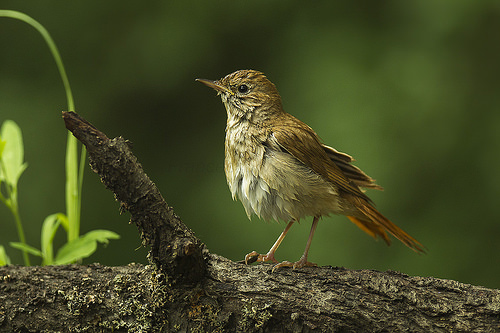Common nightingales are musical wonders of nature.
- Common nightingales are a small bird native to Europe and Asia, and they migrate to Africa where they spend winter.
- ‘Common nightingales’ are also called ‘rufous nightingales’ or plain ‘nightingales’.
- The scientific name of common nightingales is Luscinia megarhynchos and it is from the family Muscicapidae, the family of Old World flycatchers.
- Common nightingales grow to be around 14 to 17 centimetres (5.5 to 6.7 inches) in length and their wings span 20 to 24 centimetres (7.9 to 9.5 inches).
- The weight of common nightingales is roughly 18 to 23 grams (0.6 to 0.8 ounces), and they have a typical lifespan of one to five years.
Common Nightingales
Image courtesy of Francesco Veronesi/Flickr
- The common nightingale feathers spread from browns to light tans, and they have a light coloured underside, while the tail feathers are a reddish-brown, and the eyes are surrounded by a white ring.
- Common nightingales are well known for their ability to sing beautiful notes during both day and night, that are highly pleasant and inspirational, though the males generally sing more than the females, and do so to attract their mate.
- The term ‘nightingale’ originates from the word in Old English ‘nihtegale’, or similar, which literally means ‘to sing at night’.
- The diet of common nightingales consists primarily of insects, though fruit, seeds and nuts, are also consumed at times.
- Nests of common nightingales are typically concealed and made of twigs and leaf litter, with females laying four to five eggs each breeding season.
Bibliography:
Common Nightingale, 2015, Wikipedia, https://en.wikipedia.org/wiki/Common_nightingale
Nightingale, 2015, A-Z Animals, http://a-z-animals.com/animals/nightingale/
Song H, Luscinia Megarhynchos, 2008, Animal Diversity, http://animaldiversity.org/accounts/Luscinia_megarhynchos/







